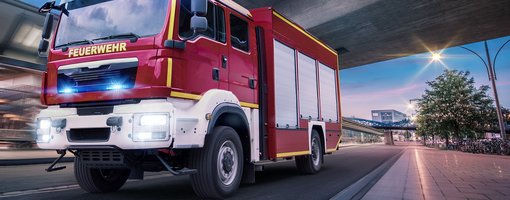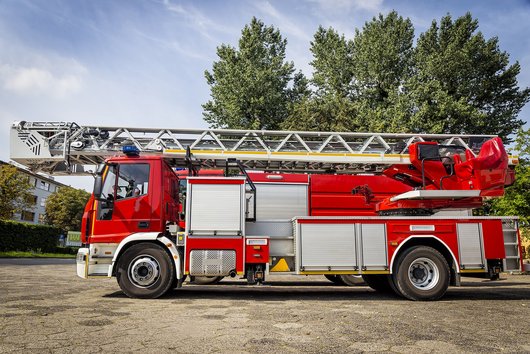The fire brigade driving licence
The fire brigade driving licence is not a separate driving licence for which you have to take a theoretical test again. It is considered a special extension of the Category B driving licence for honorary members of fire brigade organisations.
Those concerned may now also control emergency vehicles up to 7.5 tonnes of permissible total mass, including trailers. The regelation for this was enacted in 2009, normally, it is only possible with a c1 driving licence.

General information
With the ''fire brigade driving licence'' honorary activities with voluntary fire-brigades are supposed the be made more attractive. In order to be operational for fire protection, you need, in addition to the vehicles, which usually have a permissible total mass of over 3.5 tons and up to 7.5 tons, appropriate driver to control them. In addition to the previous "small" driving authorisation for emergency vehicles up to a permissible total mass of 4.75 tonnes, a "large" driving authorisation for emergency vehicles up to 7.5 T (incl. trailer) was created. However, the driving authorisations only apply to the driving of emergency vehicles for operational, training and educational purposes. Private trips are excluded.

Prerequisites
-
Have held a Class B driving licence for at least two years
-
Completion of a specific training course (see below)
-
Belong to a voluntary fire brigade, rescue service or other disaster control unit
This is how training works!
Who can train me?
In addition to recognised driving instructors, the training may also take place within the respective organisations by persons who:
- have reached the age of 30,
- have had a class C1 driving licence for at least 5 years,
- belong to the training organization.
If the training is to be carried out on a combination of vehicles covered by driving licence classes BE or C1E, the instructor must be in possession of the relevant class.
How long does the theoretical training take?
The minimum training period for the acquisition is
- the "small" driving authorization four units of 45 minutes each,
- the "big" driving authorization six units of 45 minutes each.
If you are already in possession of the "small" driving licence, you only have to complete two 45-minute units for the "large" licence.
How does the practical training take place?
As soon as the instructor is convinced that you are able to drive an emergency vehicle, the practical part may be carried out on public roads. First of all, experience is gained at traffic training areas.
The training is completed when you are able to drive the vehicle independently and safely in difficult traffic situations. You will then receive an examination certificate from your instructor.
Do I have to take a practical exam?
Although it is not necessary to take a new theoretical test, the applicant must prove his ability to drive emergency vehicles in a practical test. The examination certificate received after the practical training must not be older than three months. The examination usually lasts 60 minutes, of which 45 minutes are pure driving time and 15 minutes are allotted to basic driving tasks. If significant misconduct is found, the examination is considered failed.
![[Translate to English:] Finde deine Fahrschule, in der du einen Sonderführerschein machen kannst In the driving lessons you learn what you need for driving later and gain confidence for the test.](/fileadmin/_processed_/5/8/csm_Fahrstunde-Fuehrerschein-Uebung-Fahren-Pruefung-iStock-956167014_cd898e437f.jpg)
Find your driving school
You want to get a so-called special driving licence, but don't know where yet? Then take a look at our search, find driving schools in your area and find out about the special driving licences offered there.